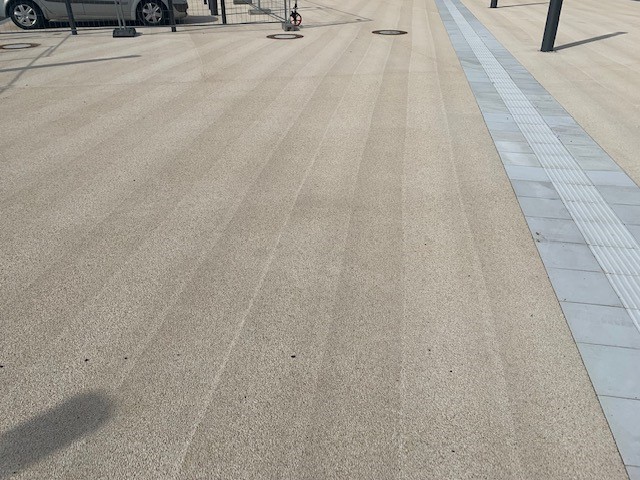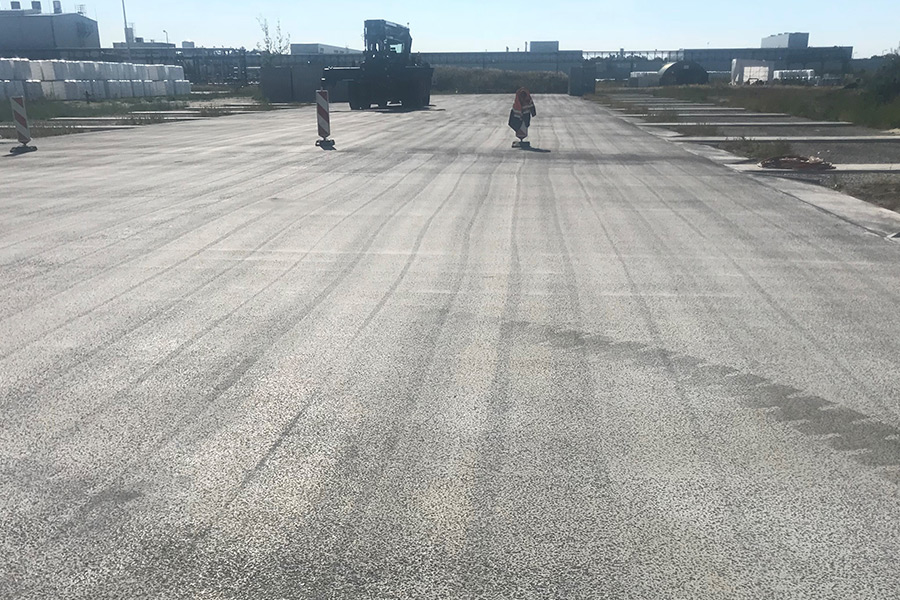Roughening asphalt surfaces for more safety
The ideal way to freshen up the road surface; a roughened asphalt surface provides much better grip. At the same time, this treatment improves the look of asphalt. Safety and aesthetics go hand in hand.
Roughening asphalt surfaces at a glance
Preparation/editing of:
Use at:
The process of asphalt roughening
Roughening is carried out by shot peening with a special abrasive. In the process, a machine hurls small grains of abrasive onto the asphalt at top speed. This results in plastic deformation - the surface is roughened.
Since we work with an integrated extraction system, we separate the abrasive grains directly from the removed particles. In this way, we create a closed material cycle. This form of asphalt processing is therefore, low-emission and environmentally friendly.


What the roughening does
The treatment causes the surface area of the ground to increase, increasing friction which immensely reduces the risk of slipping.
At the same time, the material is brightened and given a uniform look. The asphalt is therefore not only safer, but also receives a visual upgrade.


